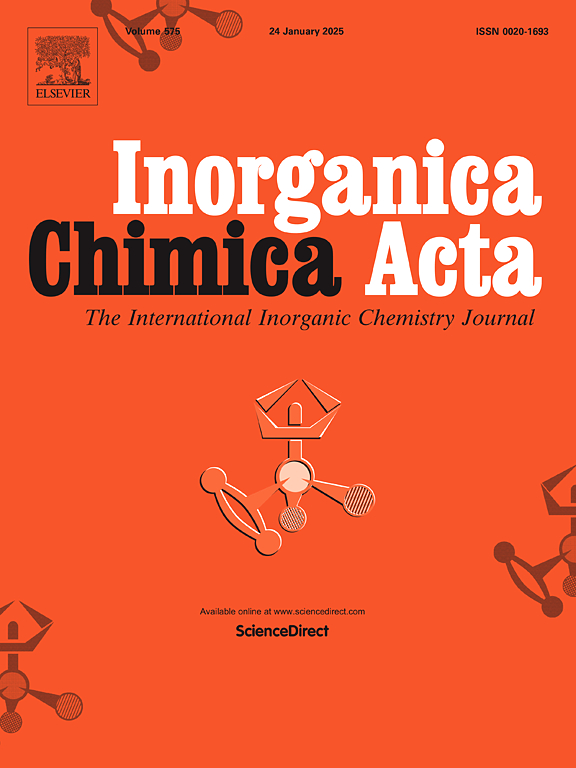新型抗菌双- Cu(II)取代双吡啶吩嗪配合物的电化学行为和DNA嵌入研究
IF 3.2
3区 化学
Q2 CHEMISTRY, INORGANIC & NUCLEAR
引用次数: 0
摘要
抗微生物药物耐药性造成的公共卫生威胁导致对现有化疗药物替代品的研究,金属基配合物提供了一个极好的和有前途的途径。Cu(II)由于其氧化还原特性可以干扰和抑制细菌生长,因此在这一领域特别受关注。本文报道了四种新型双cu (II)取代双吡啶吩嗪配合物的合成和表征。以11位取代基(NO2、Br、CH3和CN)合成双吡啶吩嗪配体(DPPZ),评价其功能对氧化还原和生物行为的影响。本文报道了DNA嵌入特性,并对配合物和配体进行了详细的电化学研究。该复合物对耐甲氧西林金黄色葡萄球菌(MRSA)和白色念珠菌的毒性进行了表征,并证明了该复合物家族在后抗生素时代作为新型抗微生物药物的前景。本文章由计算机程序翻译,如有差异,请以英文原文为准。

Electrochemical behaviour and DNA intercalation studies of novel antimicrobial Bis - Cu(II) substituted Dipyridophenazine complexes
The public health threat caused by antimicrobial drug resistance has led to research towards alternatives to current chemotherapeutics, with metal-based complexes providing an excellent and promising avenue. Cu(II) species are of particular interest in this area due to their redox properties that could interfere with and inhibit bacterial growth. Here, we report the synthesis and characterisation of four novel bis-Cu(II) substituted Dipyridophenazine complexes. The dypyridophenazine ligands (DPPZ) where synthesized with different substituents at the 11 position (i.e. NO2, Br, CH3 and CN) to evaluate the effect of the functionality with respect the redox and biological behaviour. The DNA intercalation properties together with a detailed electrochemical study of the complexes and of the ligands is reported. The toxicity of the complexes against Methicillin Resistant Staphylococcus aureus (MRSA) and the yeast Candida albicans was characterised and the promise of this family of complexes as novel anti-microbial drugs in a post-antibiotic age was demonstrated.
求助全文
通过发布文献求助,成功后即可免费获取论文全文。
去求助
来源期刊

Inorganica Chimica Acta
化学-无机化学与核化学
CiteScore
6.00
自引率
3.60%
发文量
440
审稿时长
35 days
期刊介绍:
Inorganica Chimica Acta is an established international forum for all aspects of advanced Inorganic Chemistry. Original papers of high scientific level and interest are published in the form of Articles and Reviews.
Topics covered include:
• chemistry of the main group elements and the d- and f-block metals, including the synthesis, characterization and reactivity of coordination, organometallic, biomimetic, supramolecular coordination compounds, including associated computational studies;
• synthesis, physico-chemical properties, applications of molecule-based nano-scaled clusters and nanomaterials designed using the principles of coordination chemistry, as well as coordination polymers (CPs), metal-organic frameworks (MOFs), metal-organic polyhedra (MPOs);
• reaction mechanisms and physico-chemical investigations computational studies of metalloenzymes and their models;
• applications of inorganic compounds, metallodrugs and molecule-based materials.
Papers composed primarily of structural reports will typically not be considered for publication.
 求助内容:
求助内容: 应助结果提醒方式:
应助结果提醒方式:


